Pricing Guides & Dictionary of Makers Marks for Antiques & Collectibles

COLLECTIBLE AMBER GLASS:
A Guide to Researching and Valuing Your Vintage Treasures
Join the most updated and complete collectibles research online - Learn more...
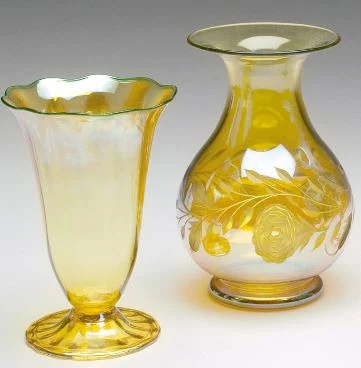 Amber glass is a popular collector's item, prized for its warm, honey-hued color and its ability to refract light in a unique way. It's been used for centuries to create everything from decorative vases and bowls to medicine bottles and apothecary jars. If you're a collector of amber glass, or just curious about it, this guide will help you understand the history and value of these beautiful vintage treasures.
Amber glass is a popular collector's item, prized for its warm, honey-hued color and its ability to refract light in a unique way. It's been used for centuries to create everything from decorative vases and bowls to medicine bottles and apothecary jars. If you're a collector of amber glass, or just curious about it, this guide will help you understand the history and value of these beautiful vintage treasures.
What is Amber Glass?
Amber glass is a type of glass that has a yellow-orange-brown color. This color comes from the addition of iron oxide and other trace elements during the manufacturing process. The iron oxide also gives amber glass its unique ability to refract light, creating a warm, glowing effect.
Amber glass was first produced in ancient Rome, where it was used to create cups, bowls, and other decorative items. It became popular in the United States during the 19th century, when it was used to make everything from apothecary jars to lampshades.
Collecting Amber Glass
Collectors of amber glass are drawn to its warm color, unique light refraction, and historical significance. The most sought-after pieces are those that were made during the late 19th and early 20th centuries, when amber glass was at the height of its popularity. These pieces often feature intricate designs and patterns, and may be signed or marked by the manufacturer.
To start your collection, consider visiting antique shops, flea markets, and online marketplaces such as eBay and Etsy. Look for pieces that are in good condition, with no cracks or chips, and that have a clear, consistent color. You may also want to consider joining a collector's group or attending a glass show to learn more about the hobby and connect with other enthusiasts.
Researching and Valuing Amber Glass
If you're serious about collecting amber glass, it's important to understand how to research and value your pieces. Here are some tips to get you started:
- Learn about the history and manufacturing of amber glass - Familiarize yourself with the major manufacturers, such as Fenton, Imperial, and Westmoreland, as well as the types of items they produced. This will help you identify and date your pieces.
- Look for identifying marks - Many amber glass pieces will have a manufacturer's mark or signature on the bottom. This can help you determine the maker and age of the piece.
- Check reference books and online resources - There are many books and websites devoted to collecting amber glass, which can provide valuable information on identifying, dating, and valuing your pieces. Some popular resources include "Collector's Encyclopedia of Depression Glass" by Gene Florence and "Collectible Glassware from the 40s, 50s, 60s" by Gene Florence.
- Consult with experts - If you have a particularly valuable or rare piece of amber glass, you may want to consider consulting with an expert appraiser or collector to determine its value.
Valuing Antique Amber Glass
The value of amber glass can vary widely, depending on factors such as age, condition, rarity, and desirability. Some pieces may be worth just a few dollars, while others can fetch thousands at auction.
To get a rough estimate of the value of your amber glass pieces, you can consult online marketplaces such as eBay and Etsy to see what similar items are selling for. You can also check auction houses and antique shops to see what similar items have sold for in the past.
If you have a particularly valuable or rare piece, it's best to have it appraised by an expert. An appraiser will consider factors such as the age, condition, rarity, and provenance of the piece and provide you with a detailed valuation report. This can be helpful if you plan to sell the piece or insure it.
Caring for your Amber Glass Collection
Proper care and handling of your amber glass pieces is essential to their preservation and longevity. Here are some tips for caring for your collection:
- Handle with care - Amber glass is delicate and can easily break or chip. Always handle your pieces with care, and avoid placing them near the edge of tables or shelves where they could be knocked over.
- Keep out of direct sunlight - Prolonged exposure to direct sunlight can cause amber glass to fade or discolor over time. To prevent this, keep your collection out of direct sunlight and away from windows.
- Store properly - When not in use, store your amber glass pieces in a secure location, such as a cabinet or display case. Use soft, non-abrasive materials to wrap and cushion each piece to prevent scratches or chips.
- Clean gently - To clean your amber glass pieces, use a soft, lint-free cloth and a mild glass cleaner. Avoid harsh chemicals or abrasive scrubbers, which can damage the glass.
Conclusion
Amber glass is a beautiful and fascinating collectible, with a rich history and enduring appeal. Whether you're just starting your collection or you're a seasoned enthusiast, understanding how to research, value, and care for your amber glass pieces is essential to their preservation and enjoyment.
By familiarizing yourself with the history and manufacturing of amber glass, learning to identify and date your pieces, and consulting with experts when necessary, you can build a valuable and rewarding collection that will bring joy and beauty to your home for years to come.
Unlock the true value of your collection with our comprehensive research guides from identifying makers' marks to appraising all kinds of antiques and collectibles, including items featured in this article.
Our up-to-date information will give you an accurate understanding of your items' worth. Don't miss out on this valuable resource - visit our research tools today!
In addition to some examples shown below on this page, you can also search our price guide for your own treasures.
Examples of related items from our Price Guides
-
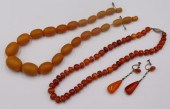 JEWELRY. COLLECTION OF AMBER JEWELRY. In
[more like this]
JEWELRY. COLLECTION OF AMBER JEWELRY. In
[more like this]
-
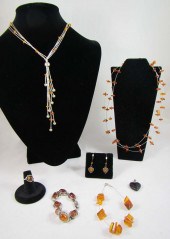 SEVEN ARTICLES OF AMBER AND SILVER JEWEL
[more like this]
SEVEN ARTICLES OF AMBER AND SILVER JEWEL
[more like this]
-
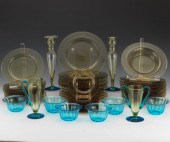 STEUBEN FREDERICK CARDER AMBER AND TURQU
[more like this]
STEUBEN FREDERICK CARDER AMBER AND TURQU
[more like this]
-
 10 PIECE AMBER & RUBY BOHEMIAN GLASS LOT
[more like this]
10 PIECE AMBER & RUBY BOHEMIAN GLASS LOT
[more like this]
-
 GROUP JEWELRY LOT OF AMBER NECKLACES, 5
[more like this]
GROUP JEWELRY LOT OF AMBER NECKLACES, 5
[more like this]
-
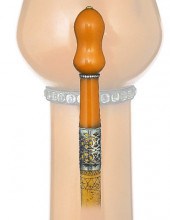 AMBER PARADE CANE-Ca. 1850 & Chester 190
[more like this]
AMBER PARADE CANE-Ca. 1850 & Chester 190
[more like this]
-
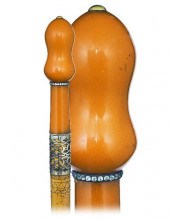 AMBER PARADE CANECa. 1850 & Chester 1901
[more like this]
AMBER PARADE CANECa. 1850 & Chester 1901
[more like this]
-
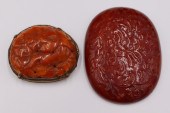 (2) ANTIQUE CHINESE CARVED AMBER PLAQUES
[more like this]
(2) ANTIQUE CHINESE CARVED AMBER PLAQUES
[more like this]
-
 (2) ANTIQUE CHINESE CARVED AMBER PLAQUES
[more like this]
(2) ANTIQUE CHINESE CARVED AMBER PLAQUES
[more like this]
-
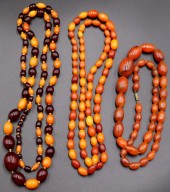 JEWELRY. GROUPING OF AMBER BEADED NECKLA
[more like this]
JEWELRY. GROUPING OF AMBER BEADED NECKLA
[more like this]
-
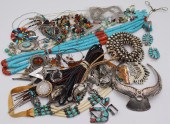 JEWELRY. ASSORTED GROUPING OF SOUTHWEST
[more like this]
JEWELRY. ASSORTED GROUPING OF SOUTHWEST
[more like this]
-
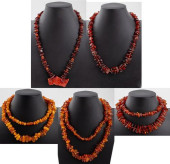 GROUP JEWELRY LOT OF AMBER NECKLACES, 5
[more like this]
GROUP JEWELRY LOT OF AMBER NECKLACES, 5
[more like this]
There are many more auction results available to our members...





